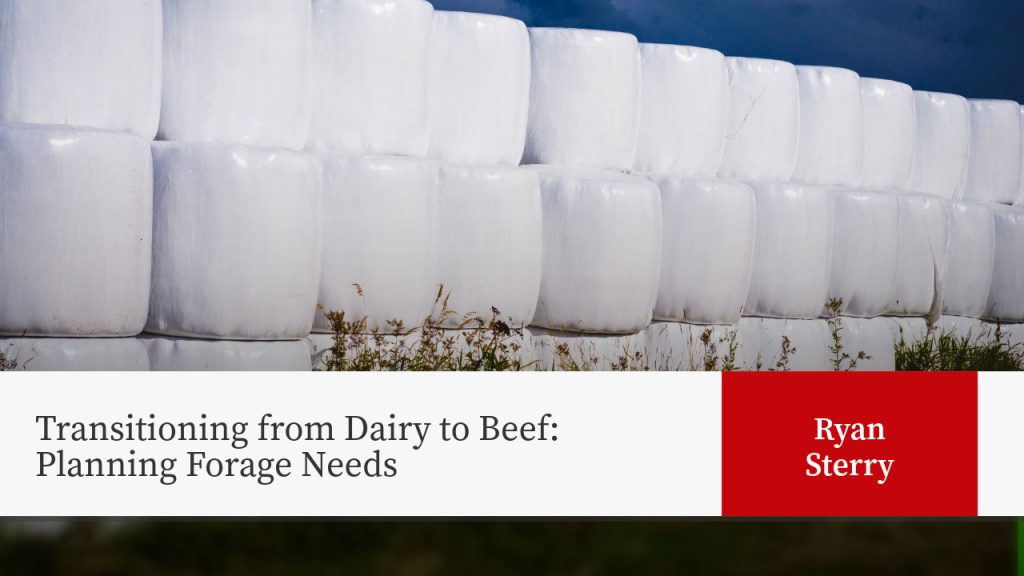
Introduction
It’s been observed that farmers often don’t retire, but instead “shift gears” by scaling back or transitioning enterprises. This is nothing new to those of us who work with the Wisconsin dairy industry, as farms have moved away from milking cows or have diversified enterprises to complement their dairy herds. A common transition is from dairy to beef, which we cover in our article, Points to Consider Before Transitioning Your Dairy Business to a Beef Operation.
Crop and Forage Acres
Your choice of beef enterprises will influence your forage needs. A beef cow-calf herd and confinement feedlot are both beef producers, but each enterprise has different forage quantity and quality needs. That said, most beef cattle spend two-thirds or more of their lives on pasture or a forage-based diet [1]. Behind every feedlot animal is their dam, who is likely on a pasture or forage-based ration.
Inventory your land resources and what those acres are best suited for: this includes existing pasture or land to be converted to pasture, acres that would benefit from being placed in long-term forage production (i.e., highly erodible, grassed waterways, etc.), and acres that are best for row crop production. Row crop acres still have a place in forage planning, either through including hay in the rotation, harvesting cover crops, annual forages, or utilizing crop residues such as corn fodder. What your land base is best suited for may influence the type of beef enterprise you pursue.
Dry Matter Intake (DMI), Energy, and Protein
Making comparisons between dairy and beef cow nutritional requirements is like comparing apples to oranges rather than apples to apples. However, these are some general starting considerations.
As dairy cow milk production has increased, so has DMI potential. Lactating dairy cow DMI’s of 60 pounds or greater are now possible [2]. For a beef cow, DMI will range from as little as 1.6% of body weight to around 2.7% with 2 to 2.5% an average starting point for good quality forage [3]. This number will vary depending on forage quality, weather, stage of gestation, and if she is lactating or dry. For a 1,400 beef cow, this equates to 23 to 37 pounds of forage dry matter.
There is an important caveat on forage-based diets: DMI is influenced by forage quality. As Neutral Detergent Fiber (NDF) increases, DMI decreases. Neutral Detergent Fiber can become a double-edged sword when allocating forages for the beef cow-calf herd. Beef cows fed with low NDF forage will continue to consume until full, even if they don’t need the extra nutrients. The rewards for overfeeding are increased feed costs and potential negative impacts on animal health. Conversely, a high NDF forage suitable for non-lactating beef cows may be insufficient for a lactating beef cow. The reward is cows that lose body condition and become harder to breed back. Too often, we see beef producers not account for the changing needs of the cow through the production cycle, and not make corresponding changes in the quality of forage fed. Because of the amazing DMI capacity of our modern dairy cows, there are fewer places to utilize high NDF forages, and the forage harvest management mentality is much different.
Takeaway #1
On a per-cow basis, DMI is less for a beef cow than dairy cow, and this will affect the total amount of feed and forage to plan for.
As you may have already guessed, differences in DMI and lactation create differences in forage quality required for dairy versus beef. Instead, we want to focus here on how needs change with the stage of production. A dry gestating 1,400-pound beef cow in the middle third of gestation needs to consume a minimum of 1.73 pounds of crude protein (CP) and 9.9 Mcals of energy. That need will increase to between 3.5-4.3 pounds of CP and 19.5-22.7 Mcals of energy by early lactation.
Takeaway #2
You can find places to utilize higher NDF, lower CP, and energy forages for the beef cow herd. However, it is critical to account for the beef cows’ changing requirements as the stage of production moves from mid-gestation to early lactation.
Forage Inventory Spreadsheet
Our Extension Livestock Program hosts a Decision Tools and Software page which includes a Forage Inventory Tool. This series of spreadsheets helps farmers make forage inventories for both baled and ensiled feeds, estimate forage needs based upon planned ration information, and estimate DMI if feeding free-choice. This is a great starting point to begin aligning forage quality and inventory with the stage of production and growth needs of your beef cattle.
This tool also estimates storage and feeding losses, which can be significant for farms that store forages outdoors and do not utilize bale feeders or bunks. Knowing your herd’s forage needs can help you plan for possible shortfalls in forage inventory before they happen. Finally, learning more about your herd’s stored feed needs can be a great motivator to improve pasture productivity and extend the grazing season, thereby reducing stored forage feeding expenses.
Author

Ryan Sterry
Regional Dairy Educator / Professor – Ryan Sterry is a Regional Livestock Educator and Professor with the University of Wisconsin – Madison Division of Extension covering Chippewa, Dunn, and Eau Claire Counties. His educational programming and research focuses on beef and dairy genetics and reproduction and Beef x Dairy crossbreeding.
References
- Grass-fed Beef Production, Felix and Williamson; https://extension.psu.edu/grass-fed-beef-production
- Formulating Dairy Cow Rations, Linn, Hutjens, Shaver, Otterby, Howard, and Kilmer, https://extension.umn.edu/dairy-milking-cows/formulating-dairy-cow-rations#dry-matter-intake-1680460
- Determining How Much Forage a Beef Cows Consumes Each Day, Rick Rasby, https://beef.unl.edu/cattleproduction/forageconsumed-day/#:~:text=Daily%20intake%20on%20a%20dry,matter%20basis%20of%20this%20feed
Reviewers
William Halfman
Beef Outreach Specialist


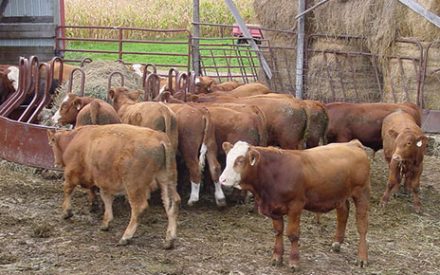 Do You Have Enough Forage? Four Steps to Figure Forage Inventory
Do You Have Enough Forage? Four Steps to Figure Forage Inventory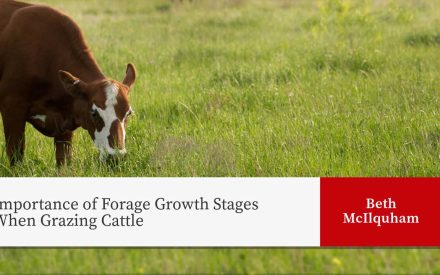 Importance of Forage Growth Stages When Grazing Cattle
Importance of Forage Growth Stages When Grazing Cattle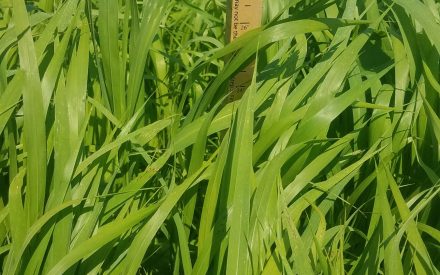 Annual Forages Provide Options
Annual Forages Provide Options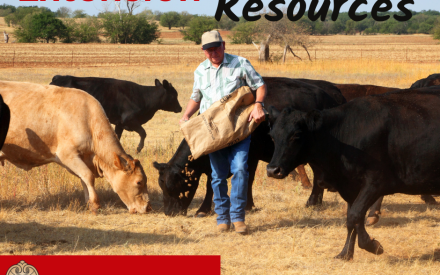 Drought resources for livestock producers
Drought resources for livestock producers


